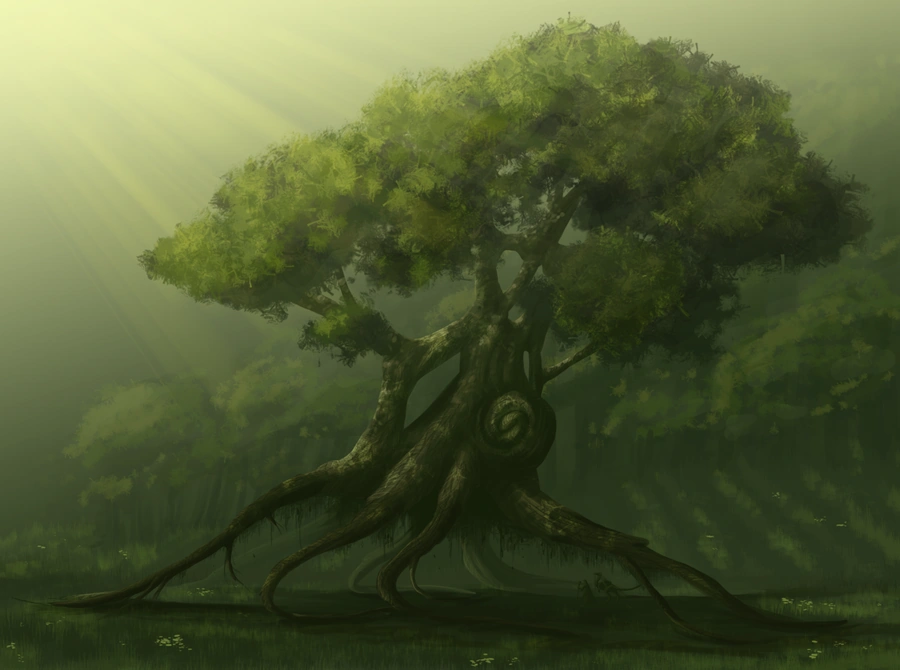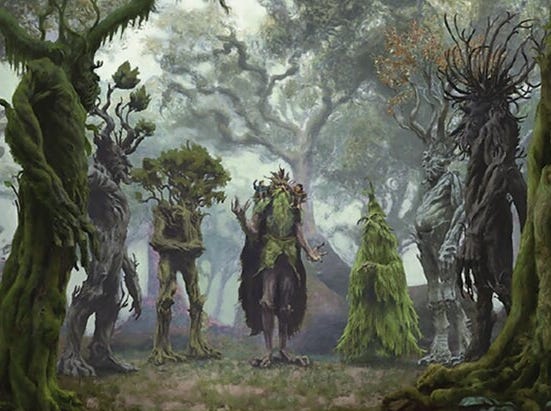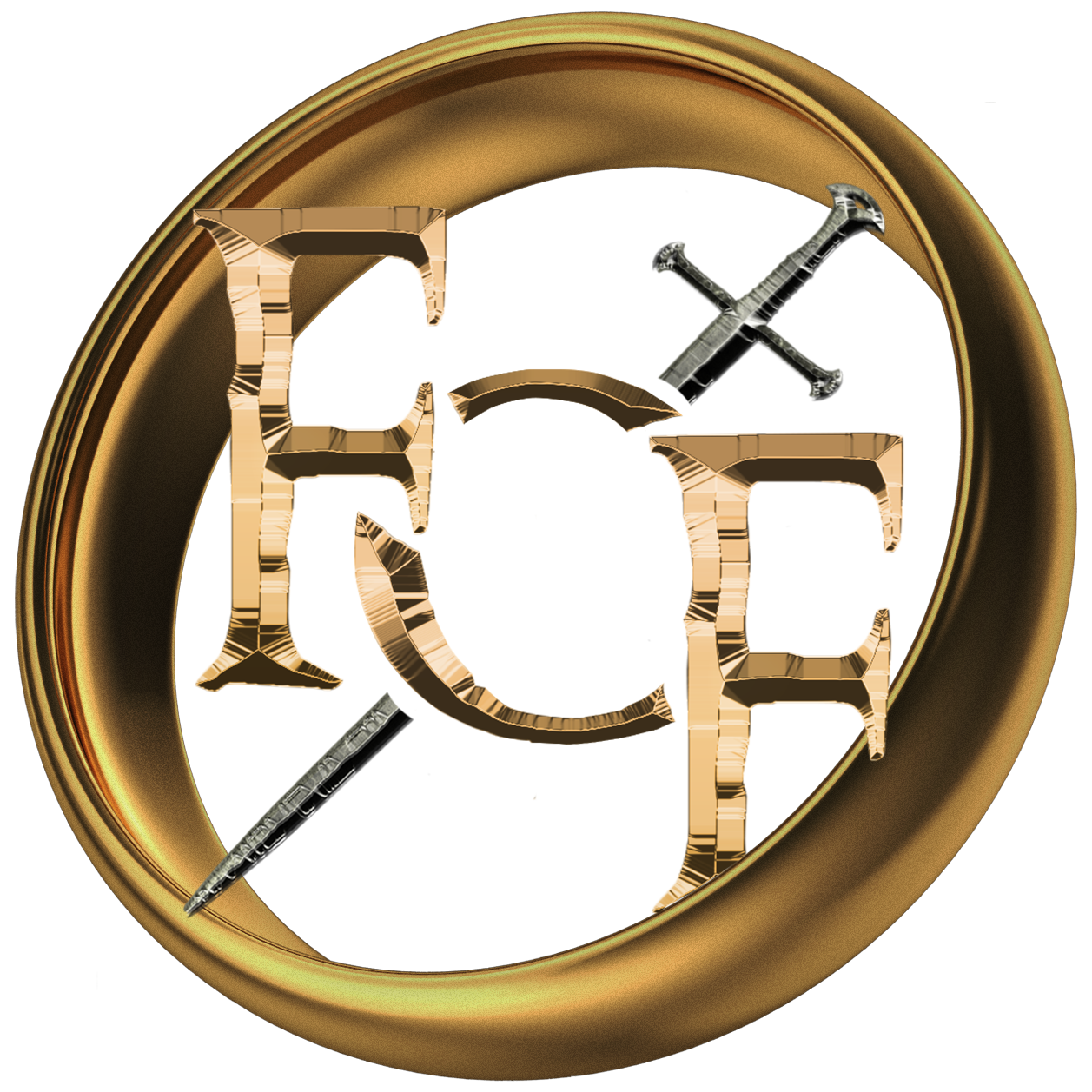
The History of the Ents and Entwives
In the First Age of Arda, Yavanna, the Goddess of Nature, wished for the forests and the trees of Middle-earth and Beleriand to be protected against the evils of not only Morgoth but of the world itself. Yavanna’s wish to protect Arda’s natural state came after the creation of Aule’s Dwarves; and after seeing their kind and their ways, Yavanna knew that if the trees, plants, and animals of the forest were to survive in this new era of the world, they would need their own shepherds to look after them and protect them. Enter the Ents.
The Ents’ First Words and Their Relationship with the Elves
The Ents were created by Yavanna to be the shepherds of the forest, caretakers, and protectors of those living within Arda’s most natural lands. They awoke in Middle-earth sometime during the First Age—after the Elves awoke in Cuivenien, and the two parties immediately grew to have an appreciation for one another. The Elves, for instance, would communicate with the Ents and help to teach them how to speak. The two races grew very fond of each other, and this fondness would grow into a mutual respect that never wavered even through the Third Age when the Elves left Middle-earth and sailed back to Valinor.
This mutual respect between both parties grew by and large due to a shared goal that boiled down to keeping the woods safe and respecting its boundaries. While the Elves would take from the forest to build their homes and supply their families with basic needs, they never once abused the forest or its resources.
On top of that, the two races would share a disdain for the Dwarves for many generations. Before the Battle of Sarn Athrad, where many Dwarves were slain by the hands of Elves, a few Dwarves managed to escape. These few Dwarves fled eastwards in an attempt to lose the Elves in the forests near the Blue Mountains; and while they were successful in that initiative, they were unsuccessful in evading the Ents who met them on the other side. These shepherds of the forest managed to assail the Dwarves and drive them back into Ered Lindon, where they were never seen again.
The Ents and Their Lands Throughout the First Age
During the First Age, the Ents would migrate all over Middle-earth and Beleriand. Though where their initial treks began is unknown, they would soon find a home in Eriador and Middle-earth’s vast forests that lay to the west. As for their foothold in Beleriand, we know that a good portion of Ents were already set up outside of Ossiriand during the aforementioned Battle of Sarn Athrad. Treebeard himself spoke of how he used to walk the lands of Ossiriand in the First Age, as well as the willowlands of Tasarian, the forests of Neldoreth, and the dark woods of Dorthonion.
“In the willow-meads of Tasarinan I walked in the Spring,” Treebeard said. “I wandered in Summer in the elm-woods of Ossiriand. To the beeches of Neldoreth I came in the Autumn… to the pine-trees upon the highland of Dorthonion I climbed in the Winter.”
The Ents and Their Far-Distant Relatives—the Huorns

The Ents aren’t the only tree-like beings that walk in the woods of Arda, as the Huorns, who are more or less sapient trees, also take up home in the thickets and wildlands of the world. They take the form of large trees, larger than the Ents, in fact, and dwell in notable places such as the Old Forest and Fangorn Forest. Though it is not certain, many believe that Old Man Willow was a Huorn, as he shared much of the same characteristics that are commonly associated with Hourns. Some of these characteristics are: Larger in size compared to the Ents, slow in speed, yet more aggressive than their Entish counterparts, and non-verbal. The only question that remains is: If Old Man Willow was a Huorn, and he was able to cast a sleeping spell on the Hobbits, does that mean Hurons are capable of magic? What do you guys think?
The Entwives and the Second Age
During the Second Age of Arda, the Ent race would run (figuratively, of course) into a problem. Expansion by the Men of Middle-earth into new areas drove most of the Ents out of Eriador and eastward towards the Rhovanion. The Numenoreans, who would begin to settle in Middle-earth during the middle-end of the Age, would pose a problem to the Ents, as their industrialization of the land made the forests of Middle-earth seem even smaller than they were before.
On top of that, one of the greatest mysteries in Tolkien’s legendarium started to take shape. See, during this point in the Second Age, the Entwives began to separate from their male counterparts. Though, at times, it was usual for the Entwives to leave for long periods, this occasion was quite different from the rest. Instead of leaving their male counterparts to tend to the willow-lands and gardens that they had been in for generations, this time, the Entwives left seemingly for good. They went westward towards the south of Mirkwood, far away from their original home. And after that, their trails just stop.
This is what Tolkien said about the Entwives and their disappearance: “I think in fact the Entwives had disappeared for good, being destroyed with their gardens in the War of the Last Alliance when Sauron pursued a scorched earth policy and burned their land against the advance of the Allies down the Anduin.”
The Third Age and the Battle of Isengard

The Third Age is when we start to learn more about the Ents as a race, their tendencies and ways unique to them, and their place in the larger world. In the Lord of the Rings, Treebeard gives us many insights into how the Ents go about their lives and how they deal with things. The Entmoot is one of these notable constructs of Ent society. In the Two Towers, an Entmoot is described as a long and unhurried meeting between Ent-leaders that can take days to complete.
The Entmoot that appears in the Two Towers leads to the Ents marching on Isengard; which, in turn, brings about the most prominent stage the Ents have ever been on within Tolkien’s Legendarium. Little needs to be said of the Ents’ most defining moment, as I am sure most know all about it already; but it should be said that if it wasn’t for the Ents and the Battle of Isengard, the momentum would’ve never shifted in favor of the free peoples of Middle-earth.
And because of that, the role the Ents played in the War of the Ring should never be overlooked or set aside.
The End of the Ents and the Fourth Age
Nothing is infinite in Middle-earth, and even though they are some of the longest-living beings in all of Arda, the Ents are no exception to that rule. After the destruction of Isengard, and the reclamation of the forests that surrounded it, the story of the Ents just kind of… ends. Not much is known about their travels after that, nor of their actions after the end of the Lord of the Rings. Many believe that, like with most of the races in Middle-earth during that time, the Ents just went along their way, not caring for much and simply enjoying the time of peace they were living in. But what if I told you that they didn’t just stay idle like they had been for hundreds and hundreds of years within Fangorn? What if I told you that after the Fall of Isengard, and after the events of the Lord of the Rings altogether, the Ents took it upon themselves and made it their mission to search for their wives across the plains and forests of Middle-earth?
Or would that be too hasty of them? You decide.




No Comments